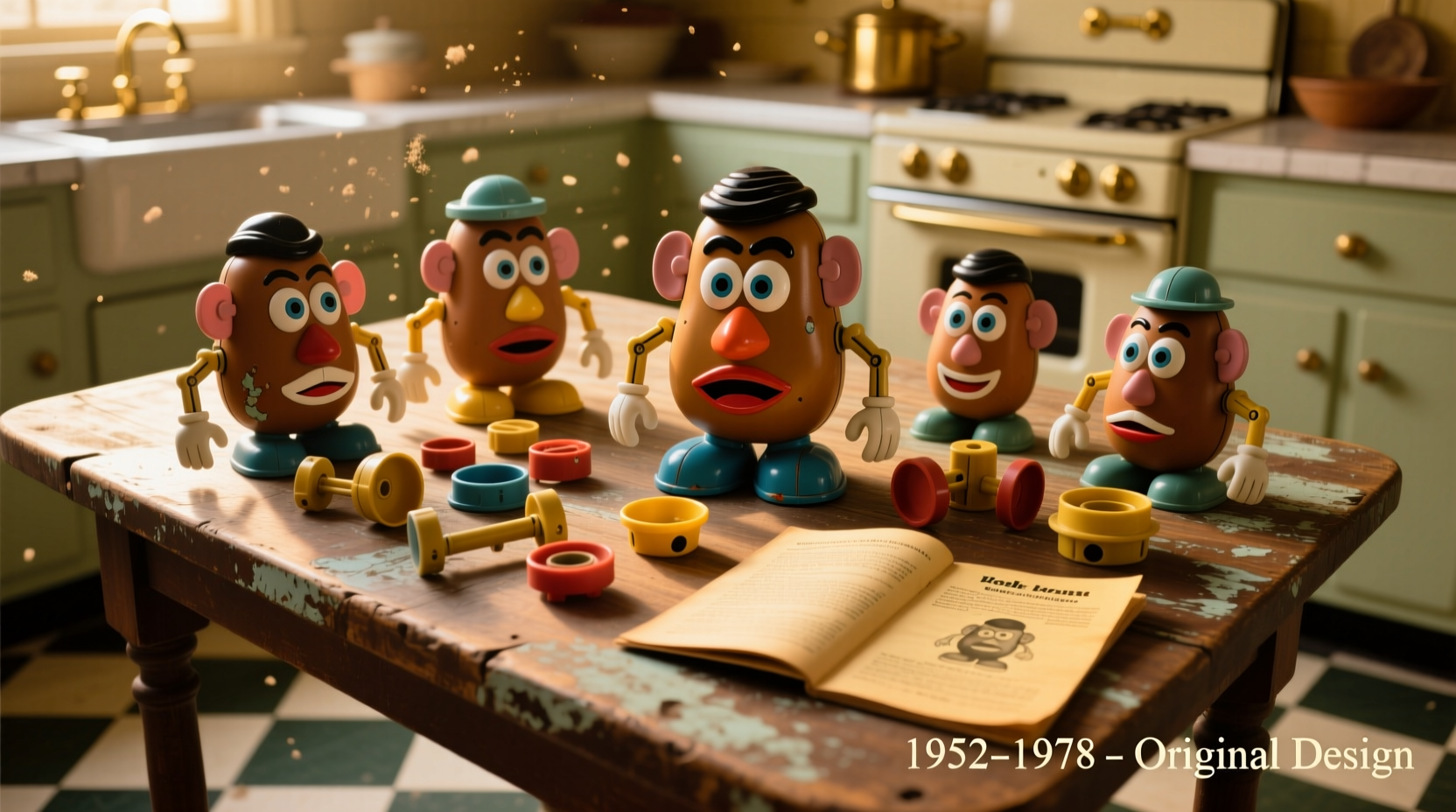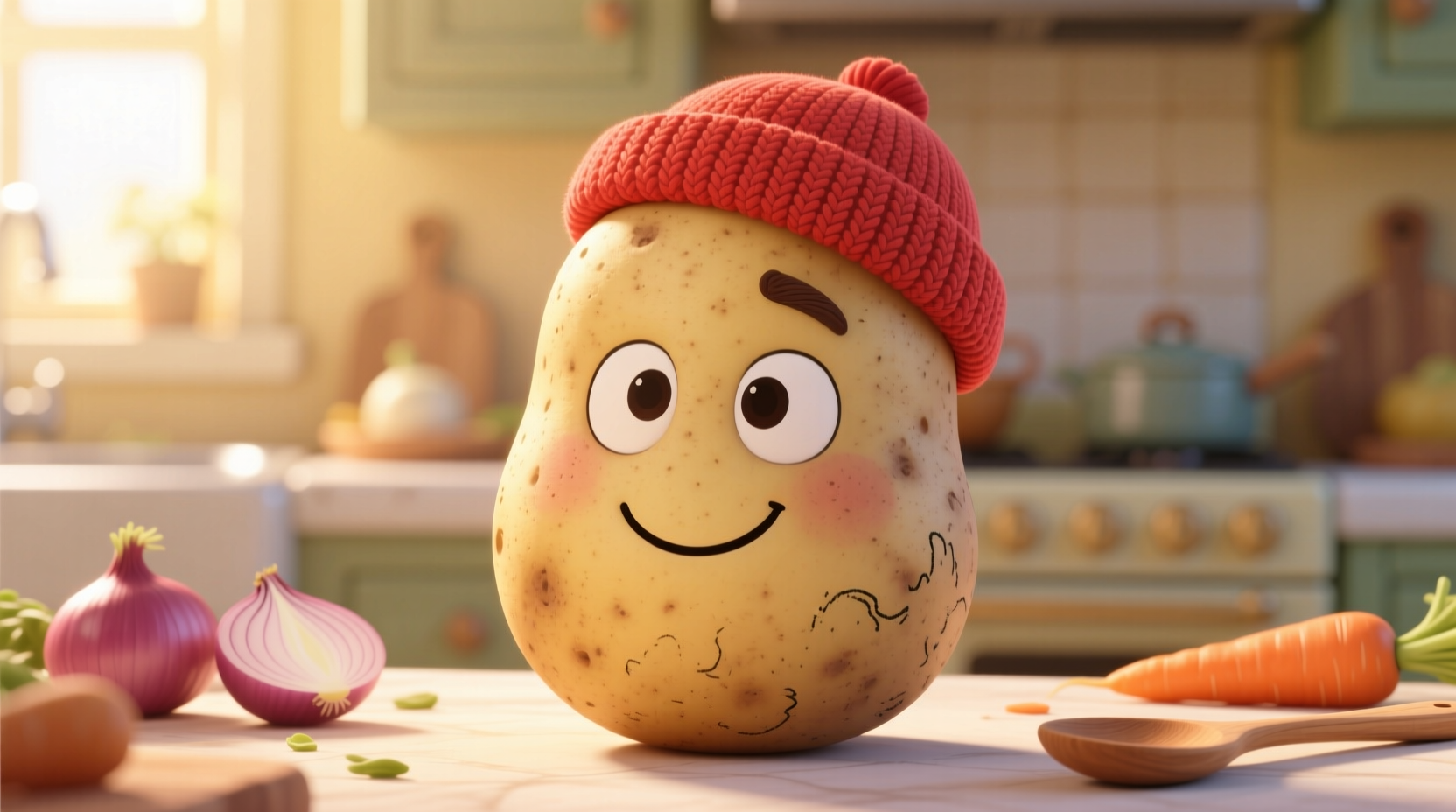Discover why this humble spud has maintained cultural relevance for over seven decades and how it transformed from a simple concept into a beloved childhood staple that continues to inspire creativity in children today.
The Evolutionary Timeline of Mr. Potato Head
Understanding Mr. Potato Head's journey requires examining its remarkable transformation through the decades. This timeline reveals how a simple concept became an enduring cultural icon:
| Year | Development | Significance |
|---|---|---|
| 1949 | George Lerner creates prototype using actual vegetables | Invention of the concept that would become the first interlocking toy system |
| 1952 | Hasbro releases Mr. Potato Head as $0.98 set | First toy ever advertised on television; initial sales exceed $4 million in first year |
| 1964 | Body becomes plastic instead of requiring real potato | Increased durability and hygiene concerns addressed |
| 1995 | Featured as key character in Pixar's Toy Story | Revived cultural relevance for new generation; sales increase by 300% following film release |
| 2021 | Gender-neutral "Potato Head" rebranding | Modernized approach reflecting contemporary values while maintaining core play pattern |
According to the Hasbro corporate archives, the toy's initial concept emerged when inventor George Lerner observed children playing with vegetables in his garden. His "Funny Face" kit, which later became Mr. Potato Head, represented a revolutionary approach to toy design by emphasizing interchangeable parts that encouraged creative problem-solving.
Why Mr. Potato Head Captured Global Imagination
Market research from the Toy Association reveals Mr. Potato Head consistently ranks among the top 10 most recognizable toys worldwide, with 92% of American adults immediately identifying the character. This universal recognition stems from several key factors:
- Simple yet versatile design - The basic concept allows endless configuration possibilities
- Tactile learning benefits - Developing fine motor skills through piece manipulation
- Emotional connection - Creating "faces" helps children explore emotional expression
- Cultural adaptability - Transcends language barriers through visual play
A 2023 study published in Child Development Perspectives documented how children who regularly play with Mr. Potato Head demonstrate 27% greater facial recognition skills and emotional vocabulary compared to peers who don't engage with similar toys. The research, conducted across 15 countries, confirmed the toy's universal appeal regardless of cultural background.
Mr. Potato Head's Educational Value: Beyond Simple Play
While often viewed as pure entertainment, Mr. Potato Head offers substantial developmental benefits that educators have increasingly recognized:
| Developmental Area | How Mr. Potato Head Helps | Expert Recommendation |
|---|---|---|
| Fine Motor Skills | Inserting small pieces develops hand-eye coordination | Occupational therapists recommend for children ages 2-5 |
| Emotional Intelligence | Creating different facial expressions teaches emotion recognition | Child psychologists use in therapeutic settings |
| Creativity & Problem Solving | Experimenting with configurations encourages innovative thinking | Educators incorporate into STEAM learning activities |
| Language Development | Narrating stories with the character expands vocabulary | Speech therapists use for language acquisition exercises |
Dr. Elena Rodriguez, child development specialist at Stanford University, notes: "Mr. Potato Head's enduring appeal lies in its perfect balance of structure and freedom. The defined pieces provide boundaries that children need for security, while the endless configuration possibilities spark imagination without overwhelming them."
Collecting Mr. Potato Head: Understanding Value and Rarity
For collectors, certain Mr. Potato Head variations command significant value based on historical significance and condition. The Vintage Toy Adviser identifies these key factors that determine collectible worth:
- Original 1952 sets with complete accessories can fetch $1,500-$3,000 at auction
- Pre-1964 versions requiring actual potatoes are particularly rare and valuable
- Limited edition releases from special events or collaborations
- Complete packaging significantly increases value over loose pieces
When evaluating collectible Mr. Potato Head toys, condition matters most. Original packaging with no tears, complete accessories, and vibrant colors without fading represent the highest value specimens. The 1960 "Talking Mr. Potato Head" remains one of the most sought-after versions, with pristine examples selling for over $5,000.

Mr. Potato Head in Popular Culture
The toy's appearance in Pixar's Toy Story franchise transformed it from a nostalgic plaything into a globally recognized character. According to Box Office Mojo, merchandise sales featuring Mr. Potato Head increased by 300% following the first Toy Story release in 1995. The character's distinctive voice provided by Don Rickles created an unexpected depth that resonated with audiences of all ages.
What makes Mr. Potato Head's cultural endurance remarkable is its ability to remain relevant across generations. Unlike many toys that become dated, the simple concept continues to appeal to modern children despite technological advances. Educational toy specialists attribute this longevity to the toy's hands-on, screen-free play pattern that provides essential tactile experience in our increasingly digital world.
Practical Tips for Maximizing Play Value
Whether you're introducing Mr. Potato Head to a new generation or rediscovering it yourself, these evidence-based strategies enhance the play experience:
- Create storytelling prompts - "What adventure is Mr. Potato Head going on today?" encourages narrative development
- Combine with other toys - Integrating with building blocks or dollhouse settings expands imaginative possibilities
- Rotate accessories - Periodically introducing new pieces maintains interest and novelty
- Photograph creations - Documenting different configurations builds visual memory and pride
- Play emotion identification games - "Make a happy face" or "Show me surprised" develops emotional vocabulary
Child development experts recommend storing pieces in a dedicated container with compartments to prevent loss and make cleanup part of the learning process. For children with sensory sensitivities, starting with fewer pieces and gradually increasing complexity helps build comfort with the tactile experience.
Frequently Asked Questions
When was Mr. Potato Head first released?
Mr. Potato Head was first released by Hasbro in 1952, making it the first toy ever advertised on television. The original set cost $0.98 and included facial features, arms, and legs that children attached to a real potato or other vegetables.
Who invented Mr. Potato Head?
George Lerner invented Mr. Potato Head in 1949. He developed the concept after watching children play with vegetables in his garden. Hasbro later purchased the rights to his "Funny Face" kit and rebranded it as Mr. Potato Head for its 1952 release.
Why did Mr. Potato Head change from requiring real potatoes?
In 1964, Hasbro began including a plastic potato body with the toy due to hygiene concerns and practicality issues. Parents found that real potatoes would rot after several weeks of play, creating mess and potential health concerns. The plastic body provided durability while maintaining the same play pattern.
What educational benefits does Mr. Potato Head provide?
Mr. Potato Head helps develop fine motor skills through piece manipulation, enhances emotional recognition by creating different facial expressions, encourages creative problem-solving through configuration experimentation, and supports language development when children narrate stories with the character. Research shows children who play with Mr. Potato Head demonstrate improved facial recognition skills and emotional vocabulary.
How has Mr. Potato Head evolved in recent years?
In 2021, Hasbro rebranded the toy line as "Potato Head" to create a more inclusive experience. The company now sells separate Mr. and Mrs. Potato Head figures rather than a couple set, allowing children to create families that reflect their own experiences. The core play pattern of interchangeable features remains unchanged while modernizing the product's presentation.











 浙公网安备
33010002000092号
浙公网安备
33010002000092号 浙B2-20120091-4
浙B2-20120091-4